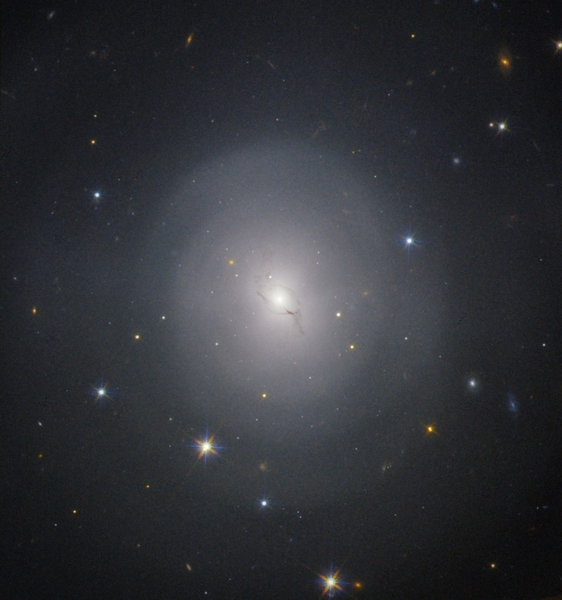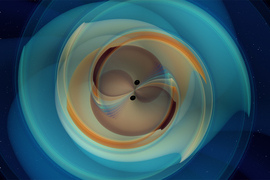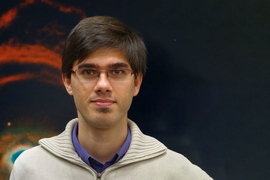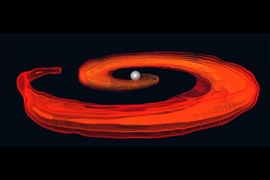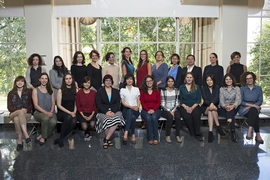We’re not quite sure how old we are — cosmologically, that is. The main methods scientists use to measure the age of the universe don’t agree with each other. Many physicists hope a newly applicable technique that incorporates gravitational-wave observations will solve this age discrepancy once and for all.
But this new technique may not be as straightforward as researchers hoped. A new paper by Hsin-Yu Chen, a postdoc at the MIT Kavli Institute for Astrophysics and Space Research, describes a potential problem with the method that, if not addressed, could catastrophically compromise its results.
Here, Chen answers questions about the new method, the issue she unearthed, and what researchers must do to resolve it. Her answers have been edited for length and clarity.
Q: How does the new method for dating the universe work?
A: Observing gravitational-wave sources can give us an independent method to measure the age of the universe. To reveal its age, we need to know how fast the universe is expanding. And to find this expansion rate, we want to know two things: how far away are cosmic bodies like galaxies, and how fast they are flying away from us.
Using telescopes, it is easy to measure how fast these galaxies move away from us, but it's difficult to measure their distance. But when observing gravitational-waves signals, it is the other way around: We can measure distance directly from the gravitational-wave observation, but it’s hard to measure how fast these gravitational-wave sources are flying away from us. For that part, we need help from traditional telescopes; we need to capture the light produced by the gravitational-wave sources.
To measure the age of the universe in this newer way, you need these two components: gravitational waves and light. It is actually a very straightforward method that astronomers consider rather clean. Some astronomers think it could solve this cosmic mystery.
Q: Your paper suggests the method might not be as reliable as people think. How so?
A: My paper says that the story might not be that simple, since we don’t know enough about the light produced by gravitational-wave sources. This lack of understanding might lead to a mathematical bias in our measurement. And if we are trying to say that we resolved this big mystery in cosmology but we actually get a biased measurement, we are not really resolving anything.
The only gravitational sources we have captured so far are collisions between two very massive objects: either two neutron stars, one black hole and one neutron star, or two black holes. You typically must have a neutron star in the collision to really get electromagnetic signals, so for this method we largely focus on the first two types. When the bodies collide, they will start to have this expanding explosion — similar to what you imagine for the supernova, but not as bright. It is called a kilonova, since it is about 1,000 times brighter than a typical nova, another type of explosion.
So, this kilonova is one of the most promising types of light emission we consider for gravitational-wave sources. But this kind of emission may not release light equally in all directions. And so, how much light we receive might depend on which direction we observe them or, as we call it in more technical terms, the viewing angle of these emissions. If we don't know what the geometry of the emission is, then we might preferentially observe one specific viewing angle and lead to a bias in our measurement.
People have been spending a lot of energy to solve other possible bias sources with this method, like instrumentational bias, but no one had studied this source of bias before. And yet, I found out that this bias could be so big that our methods might not be able to resolve this big tension that exists in cosmology.
Q: What do we need to resolve this bias?
A: We will need several things. We need more observation of kilonovae and more numerical simulations of what exactly happens in these star collisions. With the observations of kilonovae and gravitational waves combined, we might be able to figure things out, because these two observations provide different kinds of information that can overlap.
For example, the gravitational waves give us some idea of the viewing angle of the sources we observe. By combining observation of the kilonova with this viewing angle constraint from the gravitational-wave side, it’s possible that after many, many observations we could figure out whether there is a bias or not. I explored this point in my paper as well, and my answer wasn't very optimistic, but not optimistic doesn't mean not possible. It just means that we might need a lot more information before we apply this method on future observation and claim that we have solved the mystery.
Overall, this is a new method for dating the universe that’s just starting to be used, so it’s very natural for the field to find that there are some caveats. It sounds so great at the beginning, same as all other methods, but then as time goes by people start to find that we have to be more careful here and there. That's just a natural evolution for any method.
